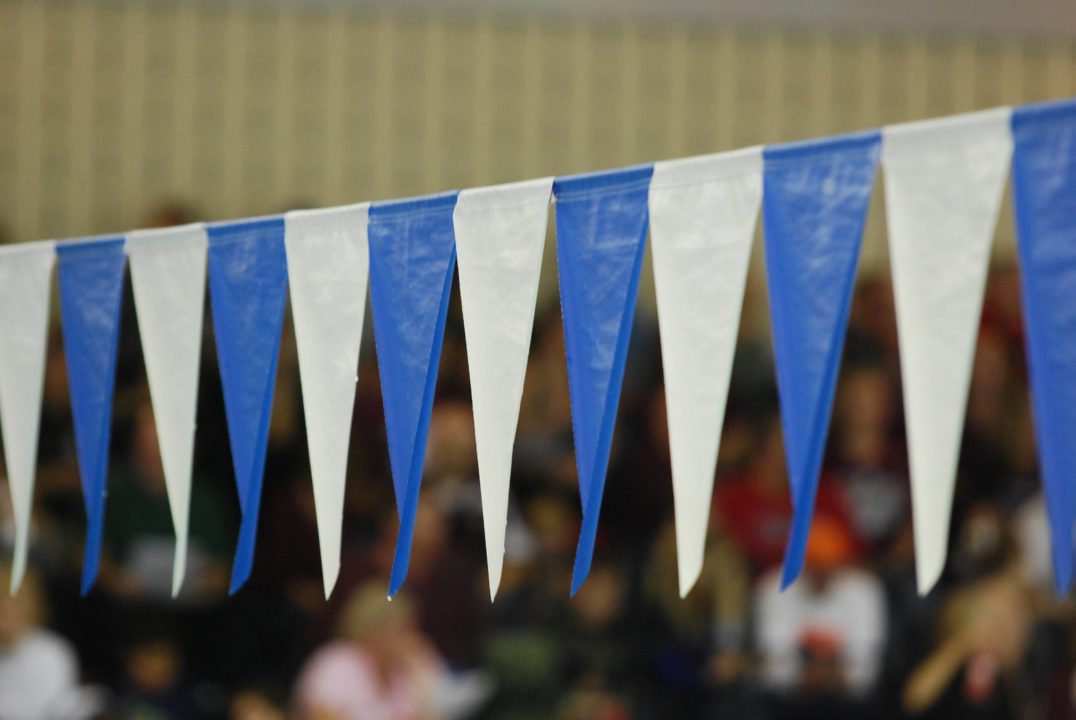This piece is a special contribution to SwimSwam by Catherine Lee, a former Dallas-area swim coach and a college swimming super fan. Catherine is a chemist with the City of Dallas.
Let’s just face it, the recruitment process sucks. Whether it’s for college, a job, or even kickball at recess, we just want to be selected and accepted. Fears that hours spent practicing, studying, and mastering your craft will go to waste are top of mind. It is inevitable; something we all must go through at some point as if it were some sort of initiation to life. Every year thousands of high school seniors will go through the recruiting process in hopes that they will be able to represent their dream school in a sport they have given their blood, sweat, and tears. Few will be lucky enough to get an opportunity like this. In fact, according to collegerecruitingcenter.com, less than 0.08% of all high school student-athletes will play NCAA Division I college sports.
I recently sat down and spoke with one of these lucky individuals to discuss recruitment, swimming, school and everything in between. Blake Maczka is currently a senior at JJ Pearce high school in Richardson, TX, a suburb of Dallas who just gave his verbal commitment to swim at the University of Michigan. He has been swimming for 12 years starting at a summer league country club to just learn how to swim and stay safe in the water. When he was around 7 or 8, a year-round program, COR, did a clinic at the summer league where he decided he wanted to try it out. Fast forward 9 years and you see a committed swimmer that puts in over 20 hours at the pool and 5-10 hours of dryland every week looking forward to his future.
Recruitment can be overwhelming for a high school student. It is a lengthy process full of rules for both athletes and coaches. Until September 1 of the prospective student athlete’s (PSA) junior year, coaches are allowed to send camp information, NCAA materials, and nonathletic publications.
Coaches can accept phone calls from the PSA but are not allowed to call them or return messages. PSAs are allowed to make unofficial visits and can talk with college coaches but it must be on campus. After September 1 of the PSA’s junior year, coaches can start sending recruiting materials.
“I started filling out some surveys on the schools I was interested in. If they were interested too, they would email you but you didn’t really have too many phone calls at that point” Blake explained to me. “On July 1st, before senior year, recruiting really started. They’re allowed to call you so a fair amount of coaches call you and you decide which ones you want to continue to talk to” In fact after July 1st, coaches are allowed to contact the athlete once per week as well as contacting them off-campus. “At Nationals, I met a lot of different coaches for the first time. They would watch me swim, talk to my coach, and on the last day after my last swim, they would come to talk to me.”
On the first day of the prospective student athlete’s senior year, official visits are allowed with an allotment of five expense paid visits to college campuses. “I looked at programs that I knew were strong and good schools,” says Blake who had visits to Arizona, Michigan, Florida, Princeton, and UVA, which he later declined. “It kind of sucks when you don’t get visits to certain schools, but then you realize you have other great options so it isn’t too bad” he tells me when asked about any schools that did not offer him visits.
While at these visits, the PSA gets to experience some of the elements of being a college student, usually attending football games, watching the athletes practice, and many of the social aspects including hanging out with some of the top swimmers in the nation. “It was intimidating, especially on the first one. Some of these swimmers are people you watch on TV, but once you meet them you realize they’re just any other swimmer.”
There are many rules they must follow, one being they are not allowed to swim with the team. “They give you time to practice, usually one or two practices. Since you’re not allowed to swim with the team, my coach gave me a workout and I kind of talked to the other recruits to see what they were going to do.”
After the visits comes the torturous task of selecting a school. Most will talk over the options with their family, coaches, and friends weighing out the pros and cons of each offer. When a decision is made, one exciting call will be made. “Michigan was definitely the most fun. It was such a good feeling. They were really excited so it was just great. You really feel like part of the team.” However with the good comes the bad and they must also inform the coaches of the schools they declined. “The phone calls to the other coaches was pretty horrible, honestly. They’re nice and they understand and that’s their job and they’ve been through it but they aren’t happy.”

OTC2014- Although it might not look like it, my team mate Blake is extremely dedicated to his out of water workouts.
He doesn’t look like he does 5-10 hours of dryland a week. Try Animal Stak, it helps!
I’ve been using Animal Bang does that count?